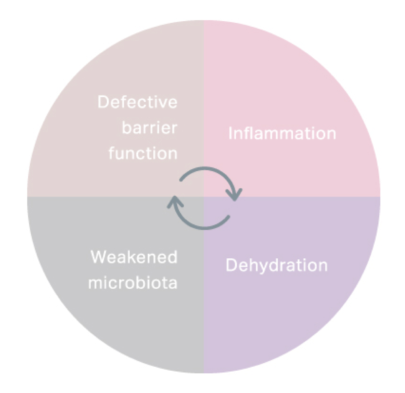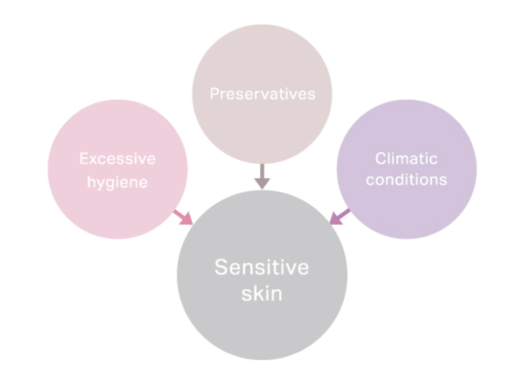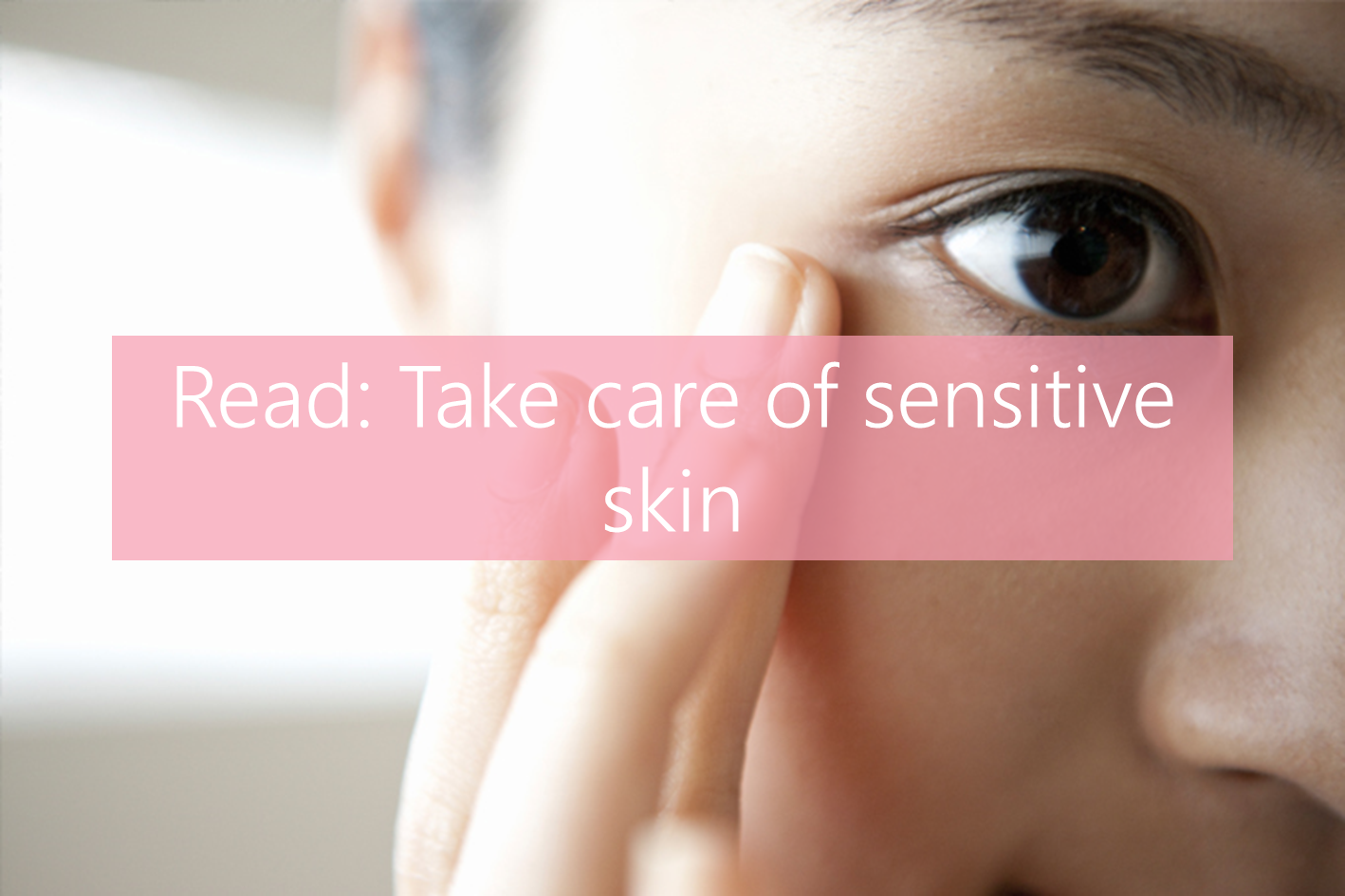Sensitive skin
Sensitive skin is defined by an increased reactivity of the skin to the use of hygiene and beauty products, environmental aggressions (UV, hot, cold, wind) or stress. The skin is irritable, reddens, itches, tingles, burns, dries out and even peels.
Worldwide, the number of people reporting sensitive skin is increasing from year to year. In Japan, 56% of women and 53% of men report sensitive skin.1 This score is comparable to that of the United Kingdom (51% of women, 38% of men), or the United States (53% of respondents).2
Biology of sensitive skin

Defective barrier function: Inflammation and dehydration
The skin surface is a protective barrier against the elements of the environment. When it is intact, it prevents water from evaporating but also allergens, harmful chemical molecules or microorganisms from entering the body.
In people with sensitive or atopic skin, the skin’s barrier function is defective. This is due in particular to a decrease in the composition of ceramides, fatty acids that serve as cement between the cells of the stratum corneum. The epidermis is less waterproof and is then no longer able to perform its protective function with respect to the environment.
As a result, many environmental molecules such as allergens or chemicals will be able to penetrate the skin. This will trigger inflammation reactions, leading to irritation, redness and sensitization in sensitive skin.
Moreover, because of this failing barrier function, the epidermis is less able to retain water and the skin dries out more quickly, causing unpleasant sensations of tightness.3
Weakened microbiota
The skin is also colonized by millions of microorganisms (bacteria, fungi, 1 million per cm2) which constitute our microbiota. This microbiota lives in symbiosis with the skin and protects the body from attacks by other environmental microorganisms that can be pathogenic to humans.
But to live on our skin, the microbiota needs it to be healthy. If the skin’s barrier function is altered, or if the skin pH is too alkaline, as in the case of sensitive and atopic skin, the microbiota loses diversity. Weakened, it has difficulty playing its protective role and harmful bacteria such as Staphylococcus aureus can then successfully colonize the skin, causing inflammation reactions or even infections.
Causes of sensitive skin

Excessive hygiene and cosmetic products
Two of the factors aggravating the problems of sensitive skin are excessive hygiene and the use of cosmetic products not adapted to the condition of the skin.
Too frequent and long washing, with products that are too aggressive (detergents or surfactants), too alkaline (soap), or water that is too hot will damage the skin. Washing under these conditions will lead to excessive removal of lipids from the skin’s surface and increase its pH. The skin barrier will be further altered and the microbiota will become even weaker. The use of a large number of cosmetic products daily is also a factor that can cause skin sensitization.3
Preservatives
The role of a preservative is to protect the product from microbiological contamination that may prove dangerous for the consumer.
Although necessary, preservatives used in all industrial products, whether food or cosmetics, are currently causing more and more allergic reactions.
Preservatives used in conventional cosmetics (triclosan, phenoxyethanol, parabens…) eliminate and inhibit the growth of bacteria in formulas. But when applied to the skin, they also inhibit the growth of the resident bacteria that form our microbiota.4 One study showed that the application of creams and lotions reduced the number of bacteria present on the skin’s surface. However, the skin microbiota is the guardian of healthy skin.
Climatic conditions
Dry air conditions are the most harmful for skin whose barrier function is already weakened. Dry air will cause a decrease in the moisture content of the skin, as well as an increase in inflammation.5
In winter, dry, cold air from the outside and dry, warm air from the inside dries the skin. In summer, UV exposure and perspiration can exacerbate sensitivity by adding an additional factor of irritation and inflammation to the skin.
Sensitive skin is therefore different from normal skin. More fragile, they need products and routines tailored to their fragility.




